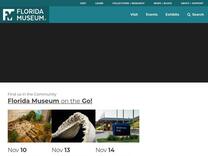Akito Kawahara – Page 3 – Research News https://www.floridamuseum.ufl.edu/science/tag/akito-kawahara/page/3/
from the Florida Museum of Natural History
information about the popular insects is scattered across… Read More In the 65-million-year-old

